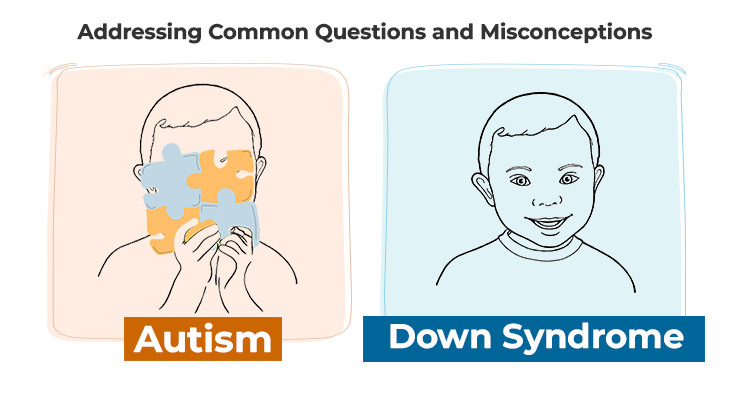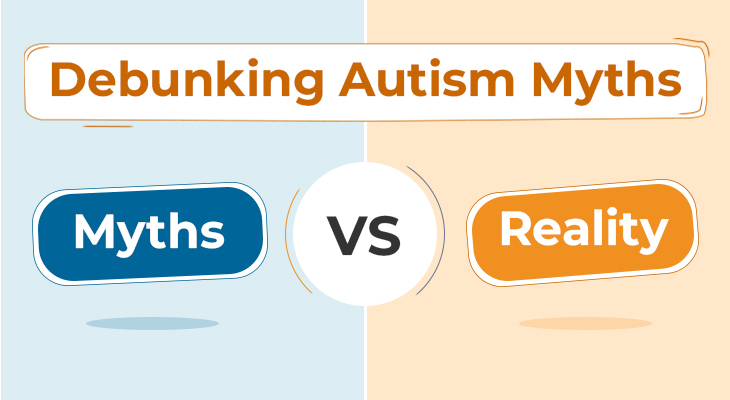Introduction
As a parent of a child with autism, you know that parenting strategies can make a world of difference in your child’s development and overall well-being. Perhaps you remember a time when you struggled to connect with your child, or when you felt at a loss for how to manage their challenging behaviors.
For many parents of children with autism, finding effective parenting strategies can be a long and difficult journey. But with the right tools and support, you can help your child thrive and reach their full potential.
In this blog, we’ll explore some of the most effective parenting strategies for children with autism, drawing on the latest research and insights from experts in the field. Whether you’re a seasoned parent or just starting out on this journey, we hope this blog will provide you with practical tips and guidance to help you navigate the unique challenges of parenting a child with autism.
Positive Parenting Strategies for Children with Autism
1. Using clear and concise communication:
Children with autism may struggle with language and communication, so it’s important to use simple and direct language when talking to them. Avoid using metaphors, sarcasm, or figures of speech that can be confusing. Be clear in your instructions and give them time to process what you’re saying. Using visual aids, such as pictures or written instructions, can also be helpful.
2. Developing a predictable routine:
Children with autism often thrive on structure and routine, so it’s important to establish a consistent daily routine that they can rely on. This can include regular mealtimes, bedtimes, and designated times for activities and therapies. Having a predictable routine can help reduce anxiety and make transitions between activities easier.
3. Using visual aids and social stories:
Visual aids and social stories can be powerful tools for helping children with autism understand and navigate social situations. Visual aids, such as pictures or diagrams, can help them understand what’s expected of them in different settings. Social stories, which use simple language and pictures to describe social situations, can help children understand social cues and appropriate behavior.
4. Providing positive reinforcement:
Positive reinforcement is a powerful tool for encouraging good behavior in children with autism. This can include praise, rewards, or other incentives for positive behavior. By focusing on what they’re doing well, you can help build their self-confidence and reinforce positive behavior.
5. Encouraging independence and self-advocacy:
While it’s important to provide support and guidance for children with autism, it’s also important to encourage their independence and self-advocacy skills. This can include teaching them how to communicate their needs and preferences, encouraging them to make their own choices, and providing opportunities for them to practice life skills, such as cooking or doing laundry.
6. Practicing patience and empathy:
Parenting a child with autism can be challenging, but it’s important to practice patience and empathy. Children with autism may struggle with social interactions, sensory sensitivities, and other challenges, so it’s important to approach them with understanding and compassion. By taking the time to understand their unique needs and challenges, you can build a stronger relationship with your child and help them thrive.
Strategies for Managing Challenging Behaviors
1. Understanding the underlying reasons for the behavior:
Children with autism may exhibit challenging behaviors, such as tantrums or self-injury, which can be difficult for parents to manage. It’s important to understand that these behaviors are often a way for the child to communicate their needs or frustrations. By understanding the underlying reasons for the behavior, parents can work to address the root cause of the behavior and develop strategies to prevent it from happening in the future.
2. Avoiding triggers and providing a calming environment:
Children with autism may be sensitive to certain stimuli, such as loud noises or bright lights, which can trigger challenging behaviors. It’s important to identify these triggers and take steps to avoid them whenever possible. Providing a calm and structured environment can also help reduce anxiety and prevent challenging behaviors from occurring.
3. Using positive reinforcement to encourage appropriate behavior:
Positive reinforcement, such as praise or rewards, can be a powerful tool for encouraging appropriate behavior in children with autism. By focusing on what the child is doing well, parents can help build their self-esteem and reinforce positive behavior.
4. Using appropriate consequences for inappropriate behavior:
While positive reinforcement is important, it’s also important to use appropriate consequences for inappropriate behavior. This can include things like time-outs or loss of privileges. It’s important to be consistent with consequences and to make sure they are appropriate for the behavior.
5. Seeking professional help when necessary:
Parenting a child with autism can be challenging, and sometimes it’s necessary to seek professional help. This can include working with a therapist or behavior specialist to develop effective strategies for managing challenging behaviors, or working with a speech or occupational therapist to address communication or sensory issues. Seeking professional help can help parents develop a better understanding of their child’s needs and develop effective strategies for supporting their development.
Strategies for Supporting Learning and Development
1. Using a multisensory approach to learning:
Children with autism often benefit from a multisensory approach to learning, which involves engaging multiple senses in the learning process. This can include using visual aids, hands-on activities, and movement to reinforce learning. By using a variety of sensory inputs, children with autism can better process information and retain new concepts.
2. Breaking down tasks into smaller, manageable steps:
Children with autism may struggle with executive function skills, such as planning and organizing. Breaking down tasks into smaller, manageable steps can help them better understand and complete tasks. This can also help reduce anxiety and frustration by making tasks feel more achievable.
3. Providing opportunities for social interaction and communication:
Social interaction and communication can be challenging for children with autism, but it’s important to provide opportunities for them to practice these skills. This can include structured social activities, such as playdates or group therapy, as well as everyday interactions with family and peers. By providing opportunities for social interaction and communication, children with autism can improve their social skills and build meaningful relationships.
4. Using technology and assistive devices to support learning:
Technology and assistive devices can be powerful tools for supporting learning in children with autism. This can include using apps or computer programs to reinforce academic concepts, or using assistive devices, such as communication devices or sensory tools, to support communication and sensory processing.
5. Encouraging physical activity and exercise:
Physical activity and exercise can have numerous benefits for children with autism, including improved mood, reduced anxiety, and improved overall health. Encouraging physical activity can also provide opportunities for sensory input and can help improve gross motor skills. This can include structured activities, such as sports or dance classes, as well as unstructured playtime.
Conclusions
Parenting a child with autism can be a challenging but rewarding experience. Understanding autism and implementing effective strategies can help support your child’s growth and development. Remember to establish routines and structure, use visual aids and social stories, provide sensory input, use positive reinforcement, be patient and flexible, and seek professional support when needed. With the right tools and support, you can help your child thrive and reach their full potential.
For information on autism monitoring, screening and testing please read our blog.
References
- “11 tips for new autism parents”, Autism Speaks, 2023,
https://www.autismspeaks.org/blog/11-tips-new-autism-parents - “Parenting a Child with Autism Spectrum Disorder.” Centers for Disease Control and Prevention, 2021,
https://www.cdc.gov/ncbddd/childdevelopment/positiveparenting/ - “10 Tips for Parenting a Child with Autism.” American Psychological Association, 2019,
https://www.apa.org/monitor/2018/04/parenting-resources
- Parenting Child with Autism 2023
https://www.webmd.com/brain/autism/parenting-child-with-autism - “Parenting Strategies for Children with Autism Spectrum Disorder.” Autism Society, 2021,
https://autismsociety.org/the-autism-experience/?hilite=Parenting+Strategies+Children+Autism+Spectrum+Disorder - “Parenting Tips for Autism: Strategies for Raising a Child with ASD.” HelpGuide, 2021,
“https://www.helpguide.org/articles/autism-learning-disabilities/helping-children-with-learning-disabilities.htm - “Parenting a Child with Autism: A Guide for Parents.” Raising Children Network, 2021,
https://raisingchildren.net.au/autism/therapies-guide





